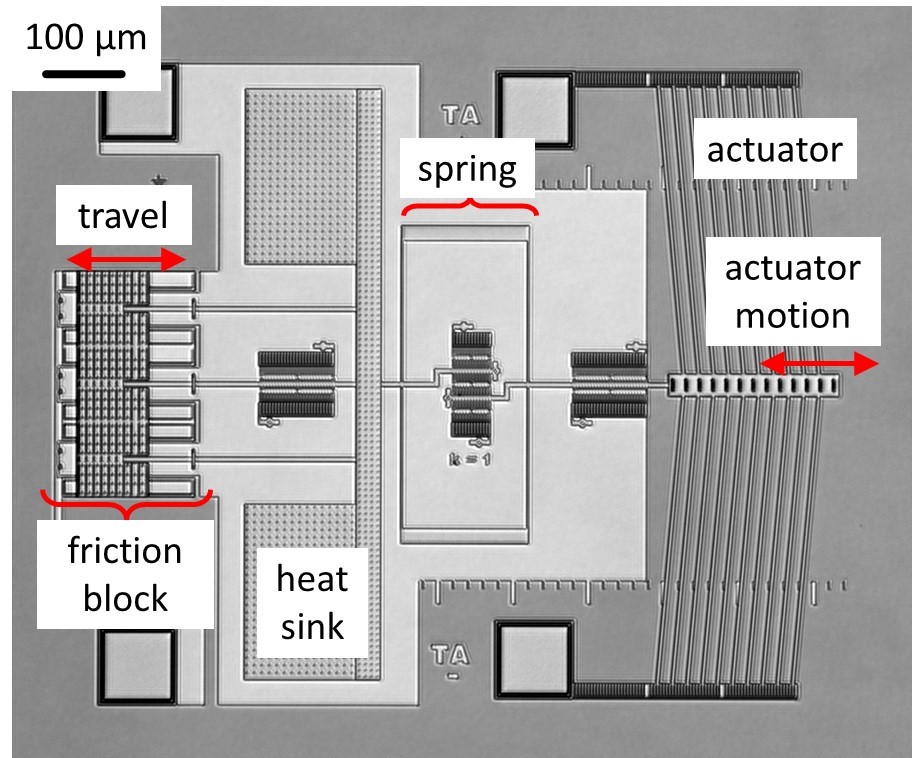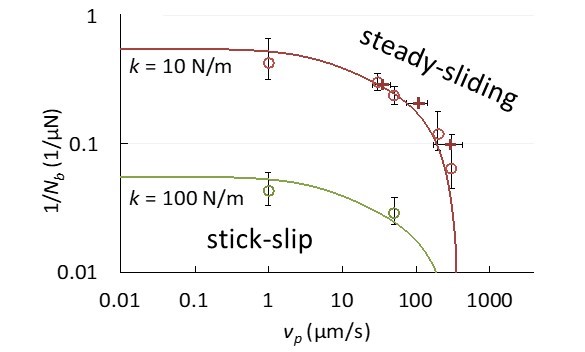Full assessment of micromachine friction within the rate-state framework
Maarten P. de Boer, Mechanical Engineering Dept., Carnegie Mellon University
Abstract for Tribology Frontiers Conference, Chicago, October, 2018
Microscale sliding objects require a predictive theory in order to be used in applications including micro-optics, memory storage, and microrobotics. We present the first full mapping and analysis of the microscale kinetic friction phase diagram, which shows how stick slip and steady sliding responses depend on velocity, load and spring constant. To achieve this objective, a micromachined friction test platform (Fig. 1) that spans a range of four decades for each of these controlling variables was developed. The constant puller velocity characteristic, from 0.1 to 1000 micrometers/s, was accomplished with a thermal actuator using iterative learning control. The new platform enables transitions between stick-slip and steady sliding through each of these variables. Experimentally, the sliding behavior of surface micromachined interfaces coated with a tridecafluorotris(dimethylamino)silane (FOTAS, CF3(CF2)5(CH2)2Si(N(CH3)2)3) monolayer was examined. Static aging, a friction decrease, then increase with increasing puller velocity, an instantaneous increase in friction in response to a step change in velocity, and stick-slip to steady-sliding transitions with decreasing normal load and increasing velocity, respectively, were observed in a wear free regime. The results formed a complete data set that was used to develop the friction phase diagram (Fig. 2). By coupling the equations of motion with a rate-state friction framework, oscillation amplitudes were also well predicted within the stick-slip field. This work shows that micromachine friction can be predicted and validated over a wide range of normal load, time and velocity.
 Figure 1: Optical image of micromachined rate-state friction test platform
Figure 1: Optical image of micromachined rate-state friction test platform
 Figure 2: Friction phase diagram (k-spring constant, Vp -puller velocity, Nb-normal load). Model (solid lines) and data points.
Figure 2: Friction phase diagram (k-spring constant, Vp -puller velocity, Nb-normal load). Model (solid lines) and data points.